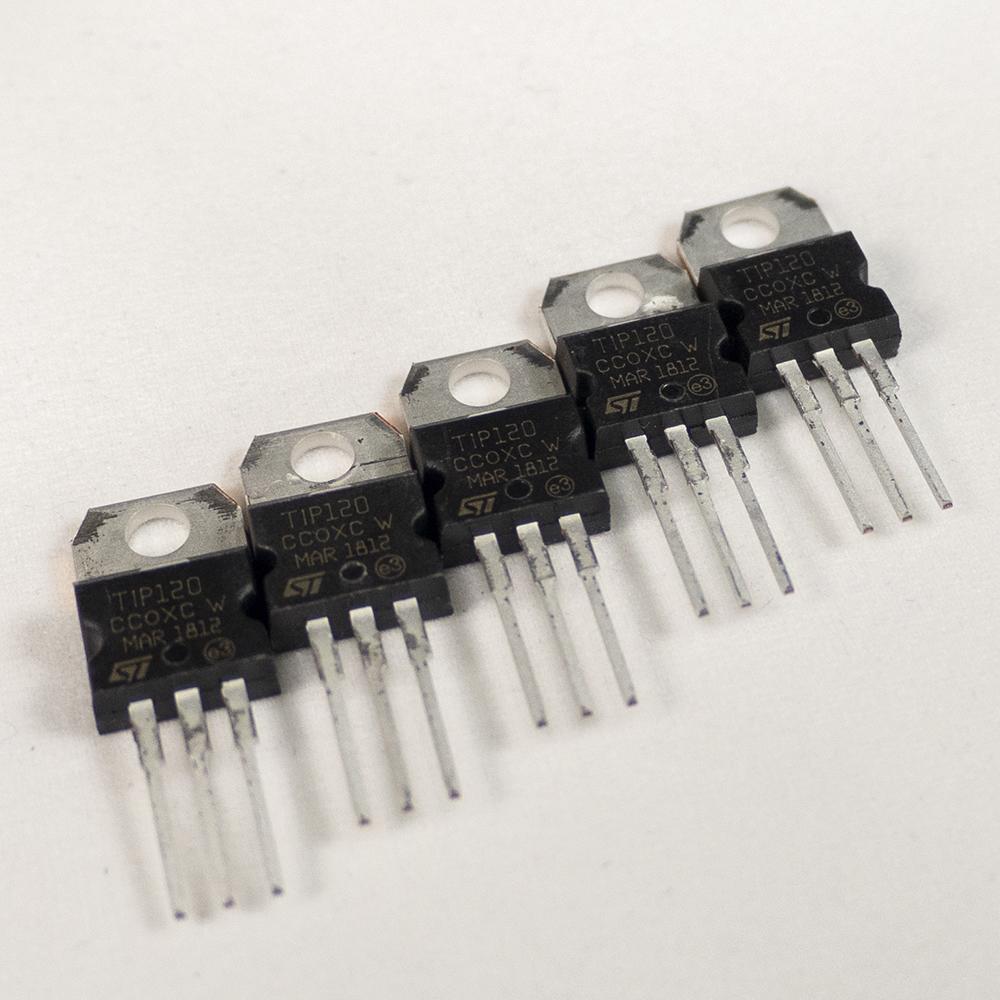

It can handle lots of power (see specs) but the Arduino can't. THE SIDEKICKS ENTER THE 1K RESISTOR & 1N4004 DIODE & 1UF CAPACITOR! The TIP120 is a very robust item. Heck I don't know what most of this stuff means. If you want to know more about Darlington transistors you can spend some time at Wikipedia It's an interesting read but you don't really need to understand it to use the TIP120. You can take this basic circuit and replace the fan with other devices.
#TIP120 TRANSISTOR PC#
THE PROJECT In this tutorial, I will build a basic circuit in which I use an Arduino to control the speed of PC fan via the TIP120. The poor TIP120 has to then pass the requested power from the external power to the motor based on Arduino's request. The TIP120 does the heavy lifting while Arduino sits back and gives orders through one of its PWM pins to the TIP120 Base pin telling it how much power to pass to the motor.

Through the Base pin, the Arduino can tell the TIP120 how much power to supply to the motor from the external battery pack. One is called Base, which we will connect to any of the Arduino PWM pins. The Arduino can tell the TIP120 how much power to pass from the external battery pack to the PC fan but the Arduino does not share any of its power or share pins with the PC fan or its batteries.

The TIP120 acts as a power broker or gatekeeper between the Arduino realm and the high power realm composed of the PC fan and its battery pack. It can be used with an Arduino to drive motors, turn lights on, and drive other high power gadgets. THE TIP120 DARLINGTON TRANSISTOR The TIP120 is an NPN Power Darlington Transistor. Slap those shields on your Arduino and you are ready to control motors and other high power stuff (some soldering may be required.) Or you can do it yourself for a fraction of the cost and double the pleasure. They have all the muscles in one nice package. There are a few add-ons out there that you can buy such as power and motor shields for your Arduino. The Arduino is good at thinking but not for heavy lifting. It can control LEDs and other low power nicknacks but not those power motors or lights you need for your next project. So you have a DC motor or lamp but no matter how you connect them to your Arduino they just won't work? Guess what, the Arduino is a brain that comes with small muscles.



 0 kommentar(er)
0 kommentar(er)
